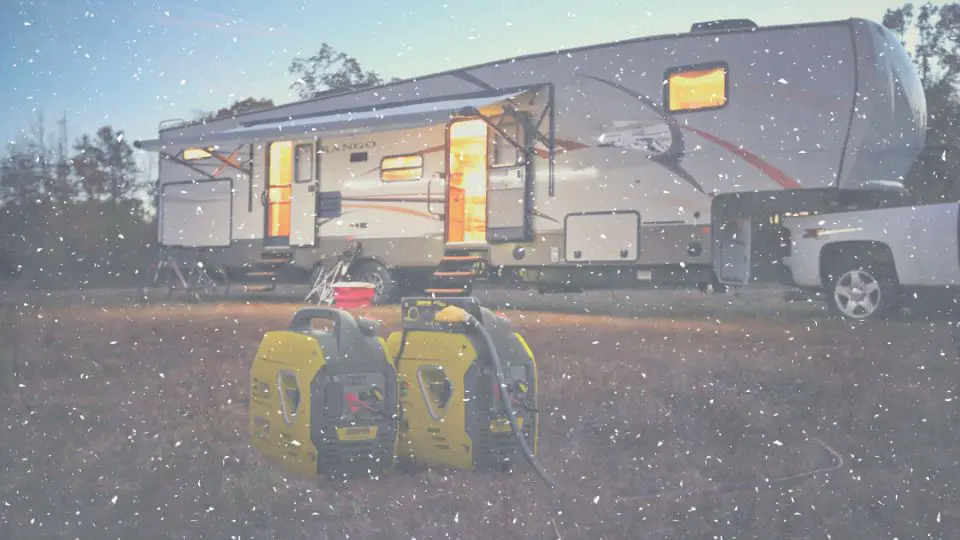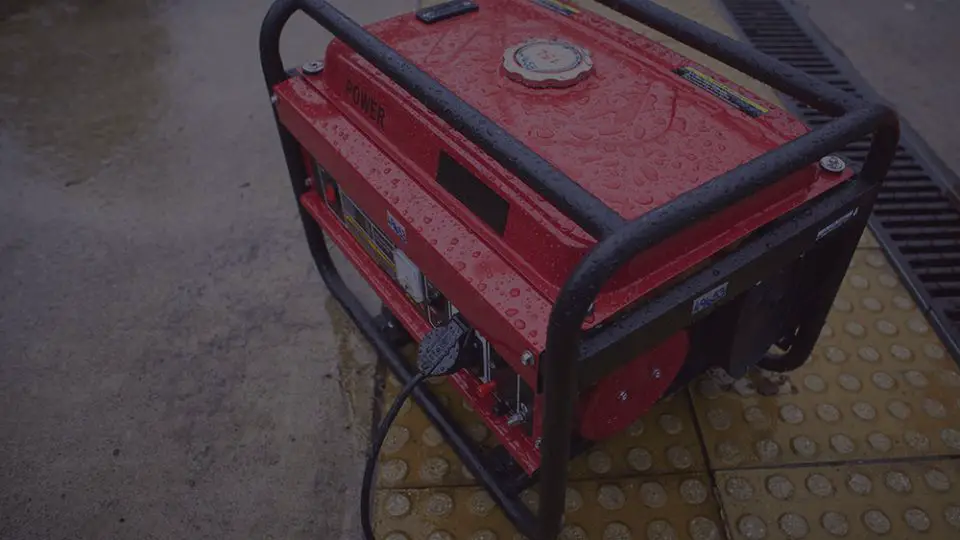This post may contain affiliate links. As an affiliate, we earn from qualifying purchases. We get commissions for purchases made through links in this post.
When it comes to generators, overloading is a common issue that many people face. An overloaded generator can cause damage to the generator itself, or even cause a fire if it’s not overload-protected. However, the good news is that fixing an overloaded generator is a relatively simple process that can be done by following a few basic steps.
The first step in fixing an overloaded generator is to determine the reason behind the overloading. This can be caused by a variety of factors, such as too many appliances being connected to the generator at once, a faulty circuit breaker, or a generator that is simply not powerful enough to handle the load. Once the reason behind the overloading has been identified, the appropriate steps can be taken to fix the issue and prevent it from happening again in the future.
Fixing an Overloaded Generator
When a generator is overloaded, it can cause damage to the equipment, and in some cases, it can even cause a fire. Therefore, it is essential to know how to fix an overloaded generator. In this section, we will provide a step-by-step guide to fixing an overload and some tips to prevent it from happening.
Step-by-Step Guide to Fix an Overloaded Generator
- Turn off the Generator: The first step to fix an overloaded generator is to turn it off.
- Disconnect Appliances: Once the generator is off, disconnect all the appliances that are connected to it. This will remove the load on the generator.
- Determine the Cause: Check the generator’s manual to determine the cause of the overload. It could be due to exceeding the equipment’s rated load capacity, a faulty appliance, or a circuit breaker that has tripped.
- Reset the Circuit Breaker: If the circuit breaker has tripped, reset it by turning it off and then on again.
- Restart the Generator: Once you have fixed the cause of the overload, restart the generator and reconnect the appliances. If the overload was due to exceeding the equipment’s rated load capacity, only connect essential appliances and don’t connect too many power-demanding devices. You can also try running the appliances at different times to reduce the load.
What causes a generator to go into overload?
Generators are designed to provide a specific amount of power output. When the generator is overloaded, it means that more electrical load is being drawn from the generator than it is designed to handle. An overloaded generator can cause damage to the generator’s engine or its circuits.
There are several reasons why a generator can go into overload, including:
- Overloading the generator with too many appliances or electrical devices
- Running the generator for an extended period of time without proper maintenance
- Using the wrong type of fuel for the generator
- Faulty appliances or electrical devices that draw more power than they should
- Improper wiring or connection of the appliances to the generator
- Running the generator at high altitudes or in extreme temperatures
How do you know if your generator is overloaded?
It is important to know the signs of an overloaded generator to prevent damage to the generator and the appliances connected to it. Some signs that your generator may be overloaded include:
- The overload LED on a generator is on (if present)
- The generator is making unusual noises or vibrations
- The appliances connected to the generator are not working properly or are not receiving enough power
- The circuit breaker on the generator keeps tripping
- The generator is overheating or emitting a burning smell
- The lights in your home are flickering or dimming
If you notice any of these signs, it is important to take immediate action to prevent further damage to the generator and the appliances connected to it.
What Happens if Generator is Overloaded?
When a generator is overloaded, it means that it is being asked to supply more power than it can handle. This can happen when too many appliances or devices are connected to the generator at the same time, or when some connected device draws too much power.
The consequences of an overloaded generator can be serious. Here are some of the things that can happen:
- The generator may shut down: When a generator is overloaded, it may shut down automatically to protect itself from damage. This can be frustrating if you need a generator to power important appliances or devices.
- The generator may overheat: If a generator is overloaded for an extended period of time, it may overheat. This can cause damage to the generator’s internal components and may even start a fire.
- The appliances may be damaged: When a generator is overloaded, the appliances that are connected to it may be damaged. This can happen if sensitive electronics experience electric surges.
It’s important to note that an overloaded generator is not only a safety hazard, but it can also cause damage to the generator and the appliances that are connected to it. Therefore, it’s important to take steps to avoid overloading the generator in the first place.
Preventing Generator Overload
Preventing generator overload is even easier than fixing it. Here are some tips to prevent generator overload:
- Check the generator’s rated load capacity before connecting any appliances.
- Avoid connecting appliances that consume more power than the generator can provide.
- Use extension cords that are rated for the load you will be connecting to the generator.
- Regularly maintain the generator to ensure it is running efficiently.
- Consider purchasing a generator with a higher-rated load capacity (usually a 6,500W model would suffice) if you frequently need to power appliances that consume a lot of power.
By following the above steps, you can fix an overloaded generator and prevent it from happening in the future. However, if you are unsure about fixing an overloaded generator, it is best to contact a professional for assistance.
Will a generator shut down if overloaded?
Generators are designed to shut down automatically if they become overloaded. This safety feature is important because it prevents the generator from overheating and causing damage to the appliances connected to it. When a generator is overloaded, it can trip the circuit breaker, which will cause the generator to shut down.
The amount of load a generator can handle depends on its wattage capacity. If the generator is overloaded, it can cause damage to the generator’s components, such as the engine, or an alternator. Overloading a generator can also cause it to produce less power than it is rated for, which can damage the appliances connected to it.
To prevent overloading a generator, it is important to determine the amount of power required by the appliances that will be connected to it. This can be done by checking the wattage rating of each appliance and adding up the total wattage. It is also important to consider the starting wattage of appliances with motors, such as refrigerators or air conditioners, as they require more power to start than to run.
In addition to checking the wattage requirements of appliances, it is important to follow the manufacturer’s instructions for the generator. This includes placing the generator on a level surface and ensuring that it is properly grounded. It is also important to use the correct extension cords and to avoid overloading any single circuit.
In summary, generators are designed to shut down automatically if they become overloaded. To prevent overloading a generator, it is important to determine the amount of power required by the appliances that will be connected to it, follow the manufacturer’s instructions, and use the correct extension cords.
Do generators have overload protection?
Generators are designed to provide electrical power for various applications, including homes, businesses, and outdoor events. However, generators can become overloaded, which can damage the generator, cause fires, and even lead to electrocution. To prevent such situations, generators have overload protection features that help to prevent overloading and protect the generator and its users.
Most generators have built-in overload protection features that can detect when the generator is overloaded and take corrective measures. These features include:
Circuit Breakers
Generators have circuit breakers that can trip when the generator is overloaded. The circuit breaker acts as a safety device that cuts off the power that’s coming from the generator when the current exceeds a certain limit. This prevents the generator from overheating and causing damage to the generator itself as well as sensitive electronic devices plugged into it.
Overload Warning Light
Most modern generators have an overload warning light that illuminates when the generator is overloaded. The warning light alerts the user that the generator is carrying too much load and needs to be stopped and reset before using it again.
Automatic Voltage Regulators
Automatic voltage regulators (AVRs) are built-in features in some generators that help to regulate the voltage output. When the generator is overloaded, the AVR reduces the voltage output to prevent damage to the generator and the electrical appliances connected to it.
Overload Reset Button
Generators have an overload reset button that can be used to reset the generator when it is overloaded. The button is usually located on the control panel and can be pressed to reset the generator after the overload has been corrected.
In conclusion, generators have overload protection features that help to prevent overloading and protect the generator and its recipients. These features include circuit breakers, overload warning lights, automatic voltage regulators, and overload reset buttons. It is important to understand these features and how to use them to prevent overloading and ensure the safe and efficient operation of the generator.
Conclusion
In conclusion, fixing an overloaded generator can be a simple process if the proper steps are taken. The first step is to identify the cause of the overload, which could be due to exceeding the generator’s capacity or a faulty electrical component. Once the cause is identified, the next step is to disconnect all electrical equipment connected to the generator and hit the circuit protector button.
If the overload is due to exceeding the generator’s capacity, it may be necessary to upgrade the generator or use different equipment. It is important to always make sure that the electrical load connected to the generator does not exceed its capacity to prevent damage to the generator or appliances, or even a fire.
In addition, regular maintenance of the generator can prevent overloading and ensure that it is functioning properly. This includes checking the oil level, air filter, and spark plug, as well as cleaning the generator and its components.
Overall, with proper maintenance and care, a generator can provide reliable power for a long time. However, in case of an overload, it is important to follow the steps outlined in this article to fix the issue and prevent any further damage.




2 thoughts on “How to Fix an Overloaded Generator?”
Comments are closed.